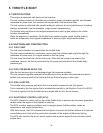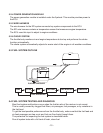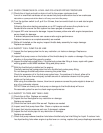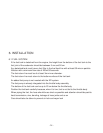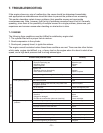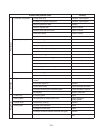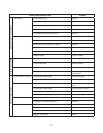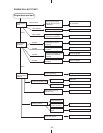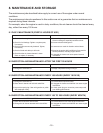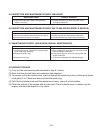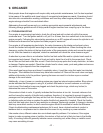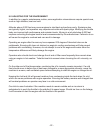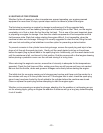
- 22 -
9-2 ADJUSTING FOR THE ENVIRONMENT
In addition to a regular maintenance routine, some application circumstances require special care,
such as high altitudes, heat and cold.
Altitudes above 5,000 feet may cause engines to start hard and perform poorly. Emissions also
are typically higher, and operators may experience trouble with spark plugs. Modifying the throttle
body can improve both performance and emission levels. Moving to a job site below 5,000 feet
requires converting the engine back to levels recommended by the manufacturer. Failure to do so
will cause the engine to overheat and can result in damage.
Operating an engine after the mercury has surpassed 100 degrees Fahrenheit also can be
problematic. Ensuring dirt does not obstruct an engine’s cooling mechanisms will help prevent
problems with overheating. However, do not attempt to cool a hot engine with water since the
temperature difference will likely damage the engine.
Operators also should check and change the oil and oil filter more frequently than normal when
using an engine in hot weather. Take the heat into account when choosing the oil’s viscosity, as
well.
On the other end of the thermometer, monitoring the oil’s viscosity remains important. If a cold
front should move in before the oil has been changed to a more appropriate viscosity, move the
machine to a warm, well-ventilated space before attempting to start the engine or change the oil.
Keeping the fuel tank full will prevent moisture from condensing inside the tank when it’s cold,
which can cause problems with engine operation. Ensuring the battery remains well-charged also
will combat problems an operator may face in a cold environment.
One trick to ease frustration if the machine needs to remain outside and an ice storm is
anticipated is to push the throttle to the middle of its speed range. Should ice form on the linkage,
it will be easier to start the engine with the throttle in this position.



